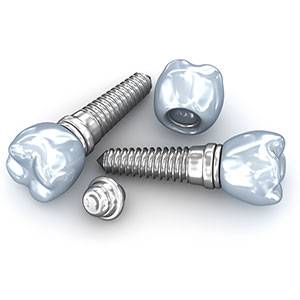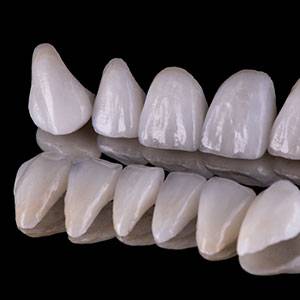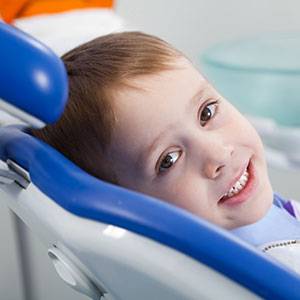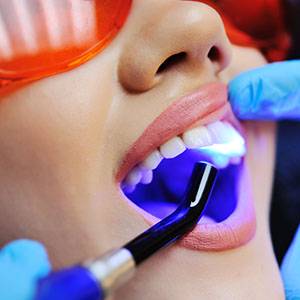FAQ
FAQ Implants
What are the consequences of having missing or badly decayed tooth/teeth?
1) The smile could be greatly compromised.
2) The ability to bite and chew well becomes a problem that worsens when ignored, and potentially affecting neighboring teeth and even the whole chewing mechanism.
3) Might cause psychological issues.
4) Wearing-off of the jaw bone supporting the tooth / teeth extracted, which will later cause more complicated dental procedures to compensate the area being restored.
5) Might even interfere with proper food digestion that could lead to physiological disorders.
Does every fractured or broken down tooth gets replaced with a dental implant?
No, only teeth that could not withstand future load or could not be re-built are replaced by dental implants. All efforts are made to save natural teeth first.
How long after tooth removal is the implant placed?
In most cases it is preferable to place the dental implants on the same day of tooth removal.
Sometimes it is better to wait for 8-12 weeks after tooth removal to place the implant if there is a great infection.
What is a dental implant?
Think of dental implants as artificial tooth roots, similar in shape to screws. When dental implants are placed in your jawbone, they bond with your natural bone by a process called “osseointegration.” They become a sturdy base for supporting one or more artificial teeth, in the form of crowns, bridges, or dentures.
When is the actual tooth crown placed over the implant?
In some cases the tooth crown is fixed over the implant on the same day of implant placement, but in most cases, a waiting period of 12-16 weeks is preferred.
How painful is tooth removal and implant placement? Does it need general anesthesia?
Both procedures do not need general anesthesia and are done in normal dental office settings under local anesthesia. On the day of the surgery and the next couple of days; some instructions are to be followed, which would keep pain or discomfort to the minimum.
What is the implant made of? Where is it manufactured?
Dental implants are made from a titanium metal alloy with a special surface which allows it to integrate very well in jaw bone.
We use more than one implant system from different manufacturers, most importantly is we only use the best and most successful brands worldwide.
Are there options other than dental implants to replace teeth?
Yes, fixed dental bridges and/or removable appliances could be used to compensate lost teeth, but dental implants remain the best option if there isn’t any medical contraindications.
What are the contraindications for dental implants?
- Uncontrolled diabetes
- Patients receiving medication for osteoporosis
- Patients receiving radiation in head and neck area.
My daughter has a missing tooth, my father also has missing teeth. Can they both benefit from dental implant service?
Young people older than 21 can safely replace their missing or un-savable teeth with implants.
Older people can also receive dental implants, after thorough investigation of their general health.
I am hesitant because I can't have my front teeth removed and wait for four months before my new teeth could be fixed over the implant. What should I do?
We always plan for a temporary appliance that you would receive right after extraction that will temporarily replace your natural teeth until the final tooth is ready for fixation over the implant.
Post-operative instructions:
- Stop hot drinks, chewing on the implant side, gargling, spitting for 24 hours.
- Drink cold drinks, place ice packs on the outside area of implant site.
- Avoid playing or checking implant site.
- Avoid smoking.
- Continue medication as prescribed by the implant surgeon.
- Stitches (if present) would be removed 14 days after implant placement.
FAQ for Crown/Lamintaes & Bridge
What is a dental crown and why do I need to do it?
It is a fixed prosthetic object “cap” that is cemented on the tooth, used to cover a damaged tooth, but also strengthens it, improving its appearance and alignment the tooth.
What is a dental bridge and why do I need to do it?
It is a fixed dental restoration used to replace one or more missing tooth by joining an artificial tooth to adjacent teeth / implant.
What is a dental laminate and why do I need to do it?
It’s a custom-made tooth colored shell designed to cover the frontal surface of the teeth to improve the appearance.
Do laminate veneers need as much tooth reduction as a regular crown?
Laminate veneer thickness ranges from 0.3 to 0.7 mm and requires much less tooth preparation, but this can vary according to tooth alignment.
What is the difference between bleaching and laminates?
Bleaching is a procedure that involves whitening teeth using certain chemical agents without altering natural teeth alignment and shape. While laminates are ceramics of egg shell thickness that are cemented to natural teeth and correct teeth shape, color and alignment.
Can laminate veneers correct any amount of malalignment?
Actually it can treat certain percentage of malalignment (as small diastemas, or slightly rotated tooth), but sometimes correcting tooth shape and alignment requires greater amount of tooth preparation, in such cases either orthodontic treatment or full crowns are more advisable.
What are the different types of crown available?
There are porcelain fused to metal (PFM) crowns and all ceramic crowns.
PFMs are made of porcelain which are reinforced with an underlying metal alloy. Full ceramic crowns do not have any metal beneath it and could be either EMAX crowns or zirconia.
What is the difference between an all ceramic crown and PFM crown?
The only difference is that all ceramic crowns offer excellent natural appearance that if they are properly made they won’t be recognizable from natural tooth, while PFM crowns can be of great natural appearance and cheaper, but it is advisable to go for PFM crowns in posterior teeth as shade and appearance are of less demand.
What is the difference between zirconia and EMAX?
EMAX crowns offer more natural look and superior esthetics. That’s why we always recommended EMAX crowns in anterior teeth, while zirconia crowns are stiffer and can withstand greater forces. That is why it is more advisable in posterior teeth to withstand greater forces of mastication.
How long will my crown last?
A properly constructed crown can last more than 15 years, but this also depends on how you will maintain your oral hygiene. Remember although dental ceramic are not prone to decay, your natural tooth lying underneath the crown can still get carious.
Do crowns need any form of special care when it comes to cleaning?
In some cases where a dental bridge is constructed, the use of interdental brushes, super floss or water flossing could be effective in cleaning beneath the bridge. Otherwise, just your regular daily brushing and flossing is more than enough. Just remember to have your annual check-up arranged to make sure everything is fine.
Is it better to do an implant or a bridge?
When it comes to replacing missing teeth implants are our first treatment option. Yet in very few cases and mostly due to medical conditions implant success is less likely. That’s when we go for bridges which is still a great treatment option if properly maintained.
How can I properly maintain my crown and / or bridge?
- Flossing should be carried out at least once daily.
- Cleaning under bridges using super floss, interdental brush, or by using a water flossing machine.
Post-operative instructions after crowns and bridges:
- Avoid drinking hot beverages for 2hours after cementation.
- Avoid eating all kind of food for 2 hours.
- Avoid eating any kind of sticky food for 24 hours.
- Flossing should be carried out at least once daily.
- Cleaning under bridges using super floss, inter dental brush, or by using a water flossing machine.
For laminate veneer:
- Flossing should be carried out at least once daily.
- Cleaning under pontics using super floss or inter dental brush.
- Avoid using frontal teeth for crushing any kind of hard food e.g: (nuts).
FAQ Bleaching (Teeth Whitening)
What is the difference between teeth whitening and teeth scaling & polishing?
Teeth whitening is the process of lightening and brightening-up the color of your teeth internally and externally, while scaling and polishing is the process of removing the external factors that caused the teeth discoloration.
Why would I need my teeth whitened?
Everyone is different; and just as our hair and skin color vary, so do our teeth. A bright white smile is always the best signature for you.
Your teeth can also be stained on the surface by calculus, food and drinks, and by smoking. These stains begin as external stains, BUT, if they stay long enough on the surface of the teeth, they penetrate into the deeper layers, having them impossible to be removed by conventional cleaning and polishing.
Some people may have internal stains due to certain use of antibiotics, or due to presence of tiny cracks in the teeth which take up stains.
Does teeth whitening work with everyone?
Nearly more than 90% of the cases respond greatly with the bleaching process, but not all cases respond likewise. For example, some cases lighten up by 8 shades, while others lighten up by 4 or 5 shades depending on the nature of your teeth.
The only cases that show very low or no response are the cases suffering from antibiotic stains, and people having a natural grey teeth color which may be better candidates for another lightening option, such as veneers/laminates, bonding, or crowns.
Teeth whitening can only lighten your natural teeth. It will not work on any types of artificial teeth nor fillings.
Could I just use regular teeth whitening tooth paste, or over-the-counter bleaching kits to whiten my teeth?
“It’s better to be safe than sorry!” Whitening tooth paste do not affect the natural color of your teeth, they may be effective at removing very light superficial stains, but the problem is that it depends on the friction of some sand-like particles onto the surface of your teeth to remove only these surface stains. By time, these particles could cause roughness to the surface of your teeth as it abrades the tooth surface.
Over-the-counter bleaching kits might give some good results but they have two main problems; first, the process is not controlled as it should be like when having an expert controlling the procedure, and this could be very harmful to your gums. Second, the results are not long lasting, so you probably will need to repeat the procedure more than 10 times per year to maintain the degree of whitening.
Is it true that bleaching takes away part of the tooth surface… how does bleaching work?
No it is not true. Bleaching gels that we use in our dental office are extremely safe, guaranteeing that no tooth structure is being lost during the procedure. We have two types of bleaching procedures:
- Office Bleaching, where we use laser whitening or power light whitening. This is where a bleaching product is painted onto your teeth and then a light or laser is shone on them to activate the gel ingredients. This procedure takes about an hour.
- Home Bleaching, where our specialist takes an impression of your teeth to make a mouth guard. Then, using your mouth guard at home, you regularly apply the gel for a specified period of time depending on the instructions given by the operator.
Office bleaching and home bleaching could be used together for better results depending on the case.
What are the side effects?
Some people may find that their teeth become sensitive to cold during or after the treatment. Others may have discomfort in the gums, a sore throat or white patches on the gum line. These symptoms are usually temporary and should disappear within a few days of the procedure.
How long will my teeth stay white and how to look after it?
The effects of whitening are thought to last up from 18 months to three years. However, this will vary from person to another depending on personal habits, like smoking, or eating or drinking products that can stain your teeth.
Following proper oral hygiene measures, and, using maintenance-home-applied bleaching kits, given by your operator, every 3-4months, maintains your new bright smile for a longer period of time.
Pedodontic FAQ
At what age should my child first visit a dentist?
We advise that the parents should consult their dentist to educate them and give them tips on how to properly maintain a good oral hygiene for their baby before any teeth eruption occurs.
How to care for those little choppers?
Even before your baby starts teething, run a clean, damp washcloth over the gums to clear away harmful bacteria until the age of 12 months. Once your baby is 12 months old, brush them with an infant toothbrush. Use water and a tiny bit of kids’ toothpaste. Kids aged 3 and up should use only a pea-sized amount of fluoride toothpaste.
How does tooth decay happen?
Even babies can develop tooth decay if good feeding habits aren’t practiced. Putting a baby to sleep with a bottle might be convenient, but can harm the baby’s teeth. When the sugars from juice or milk remain on baby’s teeth for hours, they can eat away the enamel, creating a condition known as bottle mouth decay. Pocked, pitted or discolored front teeth are signs of bottle mouth decay.
But now, what if your child got a tooth decay?
We have many options according to the type of decay ranging from simple filling till tooth extraction. But one way to save a tooth where the caries reached the pulp of the tooth (the tissue inside the tooth responsible for its blood supply and nerve sensation) is a procedure known as pulpotomy.
What is pulpotomy and/or pulpectomy?
Generally both terms mean “cutting off” of the pulp. Due to infection of the pulp tissue by the decay, the pulp tissue is removed to prevent any future pain occurring in that particular tooth, and to avoid spreading of the infection to the underlying jaw bones and permanent teeth successors.
Why pulpotomy if the tooth will fall-out?
Some parents may wonder why even bother, if the tooth will fall out anyway. But keeping these teeth can be important. Yes, if the baby tooth is a front tooth, it can fall out without any complication. But if it’s a baby molar, which is the case with almost all pulpotomy cases, and the tooth is lost prematurely, the permanent dentition will become a jumbled mess. With no teeth present to maintain the proper space for the permanent successors, the teeth will drift and the spaces will grow smaller. Then, at age 10 to 12, when it’s time for the permanent premolars to come in, there won’t be enough space for them to come out properly and they may be forced out sideways.
Premature extraction of baby teeth is the main reason for why many children need orthodontic treatment.
What’s after pulpotomy?
Non-vital teeth are brittle just like tree branches, so they protection, they need to be covered, and one way to cover those primary teeth is the use of simple prefabricated crowns known as stainless steel crowns or zirconium crowns.
What should I do if the dentist had to extract one of my child’s baby teeth?
You should treat this space by a device called space maintainer.
What is a space maintainer?
A device is made to maintain the space after premature extraction of baby teeth to allow the permanent one’s to erupt in their proper space with proper alignment.
Is thumb sucking and pacifier habits harmful for a child’s teeth?
Thumb and pacifier sucking habits will generally only become a problem if they go on for a very long period of time. Most children stop these habits on their own, but if they are still sucking their thumbs or fingers past the age of three, a mouth appliance may be recommended by your pediatric dentist.
When should I expect my baby’s first teeth?
The central incisor at 4-7th month.
When should I consider that my baby is running late on teeth eruption?
By the age of 18 months you should consult with a pediatric dentist; it may be inherited.
When should I expect my child’s first permanent teeth o come out?
At 6 years.
My child’s new teeth have ragged and uneven edges, is this normal?
Totally normal; they are uneven, thin and tend to wear away quickly while growing to fit into those big new healthy teeth.
What are the methods that could protect my child’s teeth from future decay?
Brushing, keeping up regular dental visits, limiting his frequent snacking and sticking to a healthy diet.
What should I do if my child falls and knocks out a permanent tooth?
First act quickly within the first 30 minutes!!
1. Pick up the tooth from the crown NOT the root.
2. Rinse under running water
3. Reposition it in the socket if possible
4. If you can’t reposition it in the socket, keep the tooth moist either in buccal vestibule, milk, saline or water, and call your dentist immediately.
What can I do to protect my child’s teeth during sporting events?
Soft plastic mouth guards can be used to protect a child’s teeth, lips, cheeks and gums from sport related injuries. A custom-fitted mouth guard developed by a pediatric dentist will protect your from injuries to the teeth, face and even provide protection from severe injuries to the head.





